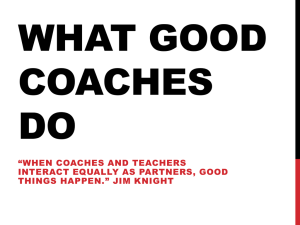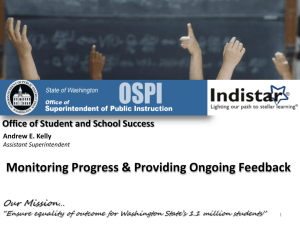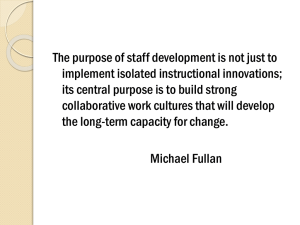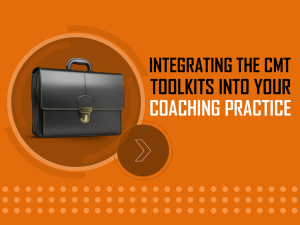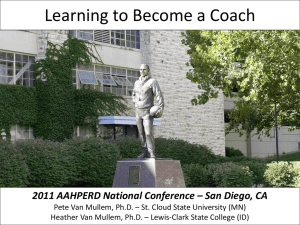Coaching and PLT`s
advertisement
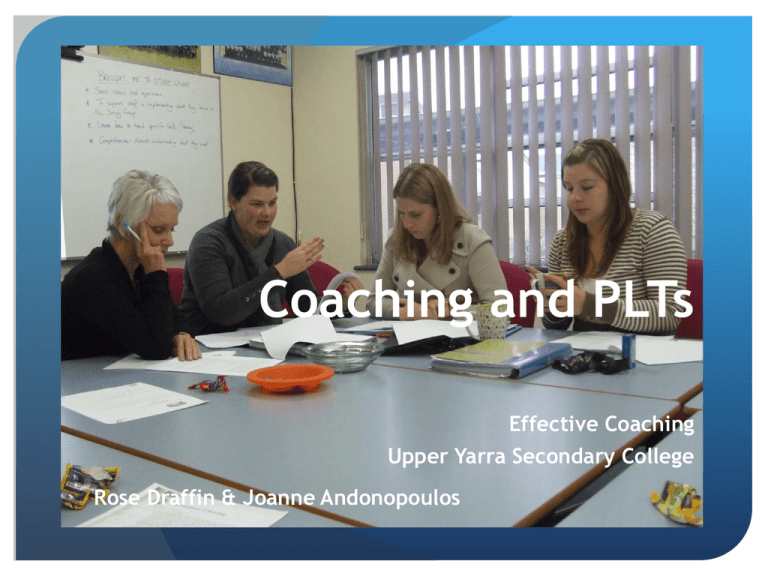
Coaching and PLTs Effective Coaching Upper Yarra Secondary College Rose Draffin & Joanne Andonopoulos Context School data consistently poor Low socio economic area Region appointed a number of coaches to UYSC and surrounding primary schools Network formed a network of coaches with a lead coach Key Factors for success Voluntary CoachIng (Ideally more than one - diversity) PLT’s Professional Learning/Bastow Network team with lead coach Focus on relationships/safe learning Who is coached? Teachers volunteered 30 teachers Experienced to inexperienced Structure of coaching First 2 years - coaches 2 full time 1 at .5 1 at .4 Third year 1.4 coaches and 3 PLT’s Right from the start there was positive take up of coaching: Different coaches appealed to a wide range of teachers Focus on building relationships Coaches selected from within the current staff Focus of Coaching Year 1: Teachers chose areas of focus to work with their coach. Diverse and varied foci Year 2: As above & Study group (PLT) – Focus: Comprehension across domains. Year 3: Three PLT’s, a number of staff volunteered to participate in groups lead by coach. Staff members as a group selected the area of focus for their learning, most of these were coached weekly or fortnightly as well. Study group foci movie PLT Foci Writing to Learn Inquiry Based Learning Independent Reading Comprehension What is it like working in a study group and being coached? More: Focused Support Accountability Depth of learning Engagement Courage English Humanities ESTABLISHING SUSTAINABLE STUDY GROUPS Things to consider when creating a model for your school: Time commitment of facilitator to organise Meeting schedule – time between sessions Length of each session Between Session Tasks Accountability Resources – texts for participants Catering STUDY GROUP FORMAT First session: Establish norms/protocols. Negotiate the focus of the study group. Look at relevant data. Small reading and discussion. Between Session Task. STUDY GROUP FORMAT Subsequent sessions: Revisit last session. Use protocol to share BST. Look at relevant data. Use protocol to discuss reading. BST Model strategies in study group that teachers will be trialling. Role of PL and Network Bastow – Role in change Establishing Literacy coaching in your school Leading Literacy in your school Model used by these courses:Ongoing PL, working in PLT lead by trainer, work in school implementing strategies eg study group, reading workshop at yr7, developing a literacy plan Network – role in leadership, PL and networking Outcomes/Data Initially a lot of the data we collected wasn’t reflective of the areas of coaching – Why New to coaching Different in a secondary: PL and coaching leadership was from primary setting Student teacher contact Large staff more autonomous Data Student Reading data Teacher Literacy in Art Humanities impact on content Key Factors for success Voluntary PLT’s Professional Learning/Bastow Network team with lead coach Focus on relationships/safe learning Coaching (more than 1 coach ideal -diversity) Keys Texts Used in PLT’s Example of strategies Quick Writes Writing break Exit slip Admit slip Brainstorming Drawing & illustrating Clustering Mapping Written conversation Write around Carousel brainstorming Double entry journal Non stop write KWL Reading, Writing, Collaboration & Thinking Activate and build background knowledge Listen to your inner voice Think and wonder about text Use text and visual features to gain information Leave tracks of thinking Ask questions and wonder about information Read with a question in mind Drawing inference TEEL Turn and talk Home court advantage Creating group ground rules Accountable talk Disagree agreeably Conversation questions Gallery walk Jigsaw Text coding Think aloud Probable passage Not so silent ball Vocab relay
